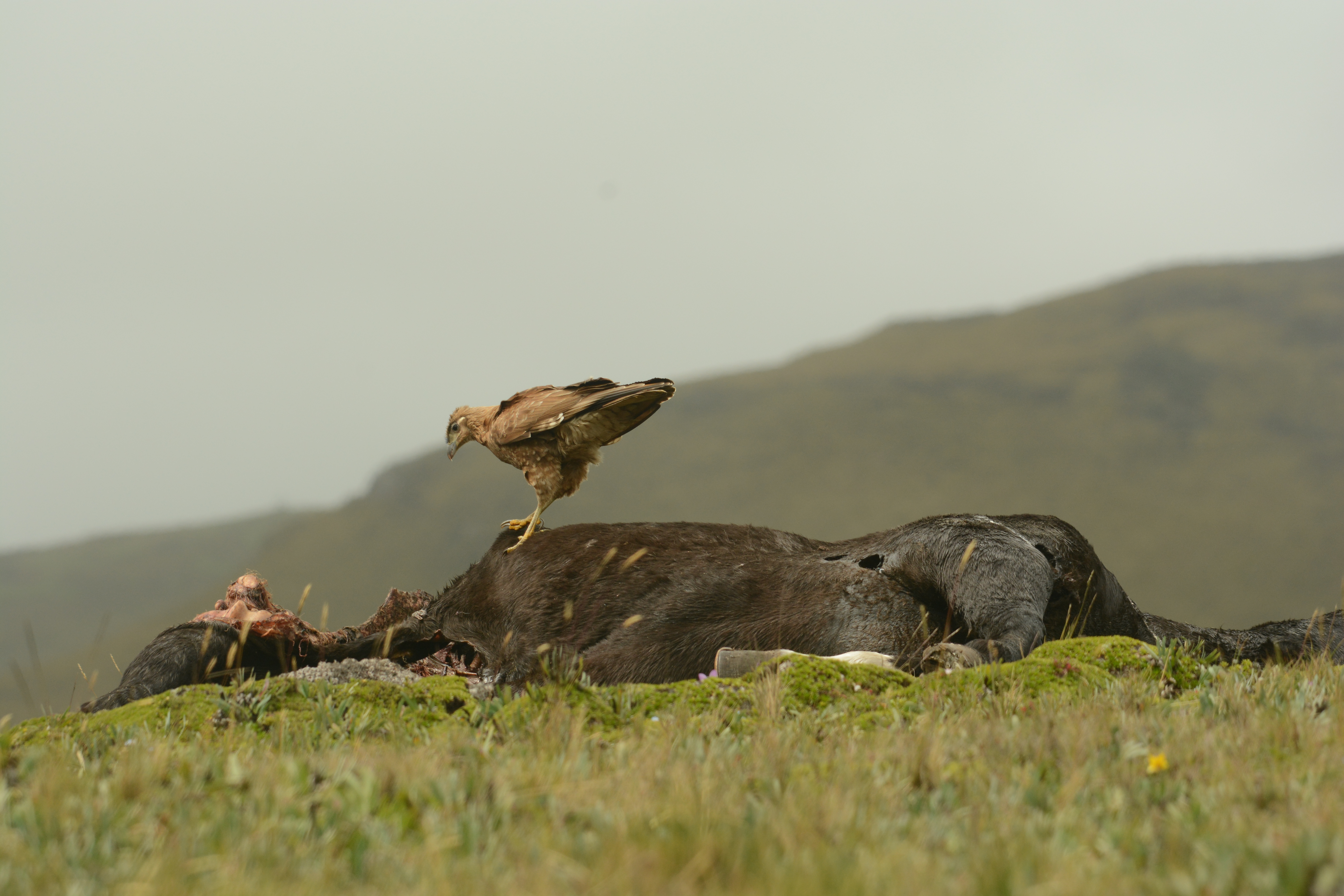Did You Know?
- The word "carunculated" means a fleshy growth, like the wattle of a turkey.
- Some researchers believe that this species fills the same ecological role in the tropics that other birds, such as crows and ravens, fill in temperate regions.
How The Peregrine Fund is Helping
The Peregrine Fund doesn't work directly with Carunculated Caracara, but our efforts in scientific research, habitat conservation, education, and community development help conserve birds of prey around the world. We also supply literature to researchers from our avian research library, which helps scientists around the world gather and share important information on raptor conservation.
Where They Llive
The Carunculated Caracara is a lovely raptor found within a relatively small region of South America. This species makes it home in the Andes of southwestern Colombia and Ecuador. It avoids dense forest habitats and prefers to spend its time hunting, roosting and nesting in open grasslands, shrub pastures, and paramó (tundra). It is often found from between 3,000-4,000 meters above sea level.
What They Do
The Caranculated Caracara is a medium-sized raptor. Adults have a shiny black back and black wings. Their breast is black with thick, white streaks and they have a small, dark spiky crest and reddish facial skin and reddish legs. They have a white rump patch and a black and white tail. Juveniles are more brown overall.
The Carunculated Caracara spends a lot of time around cattle, so if you are ever in Caranculated Caracara territory and hope to see one, first look for the herds of cows and you just might get lucky. But, don't be afraid to check high in the sky every once in a while, too, as this caracara also likes to spend a lot of soaring, either alone or in pairs.
Its common call generally consists of a series of rapid-fire, low-pitched sounds that almost resemble barks.
This raptor does exhibit local migratory behavior.
Why They Need our Help
Currently, the Carunculated Caracara is considered a species of Least Concern - which means researchers feel that their populations are healthy and will be for a long time. This is good news. In fact, this beautiful bird's population appears to be quite stable. Scientists estimate there are between 670 and 6,700 individuals across its relatively limited range.
What They Eat
The Carunculated Caracara has an extremely varied diet and, like most raptors, is opportunistic - meaning it will feed on just about anything it can find or catch. It will take a wide variety of live prey, including rabbits, rats, lizards, frogs, toads, small birds, earthworms, and insects. But it also feeds on carrion - remains of animals that died from other causes. It might feed on a small animal hit by a car, or a the remains of a large cow. It often hunts for its prey by walking or running along the ground.
Nest, Eggs and Young
While very little is actually known about the Carunculated Caracara, we do know its nest is a stick structure built on a rock ledge. When the time is right, the female will lay 1-2 eggs. Young will stay in the nest for 3-4 months before fledging.
Carunculated Caracara and The World Center for Birds of Prey
The World Center for Birds of Prey offers fun ways to learn about birds of prey. The visitor center offers interactive displays, tours, interesting videos and a children's room with activities from coloring sheets to quizzes to costumes and a touch table for the curious mind. We also have several different birds of prey on display year-around. Knowledgeable staff and volunteers are on hand to answer any questions you may have about Carunculated Caracaras or any other birds of prey.
References:
Bierregaard, R. O., P. F. D. Boesman, and J. S. Marks (2022). Carunculated Caracara (Daptrius carunculatus), version 1.1. In Birds of the World (N. D. Sly, Editor). Cornell Lab of Ornithology, Ithaca, NY, USA. https://doi.org/10.2173/bow.carcar1.01.1
Global Raptor Information Network. 2022. Species account: Carunculated Caracara Phalcoboenus carunculatus. Downloaded from http://www.globalraptors.org on 14 Nov. 2022











